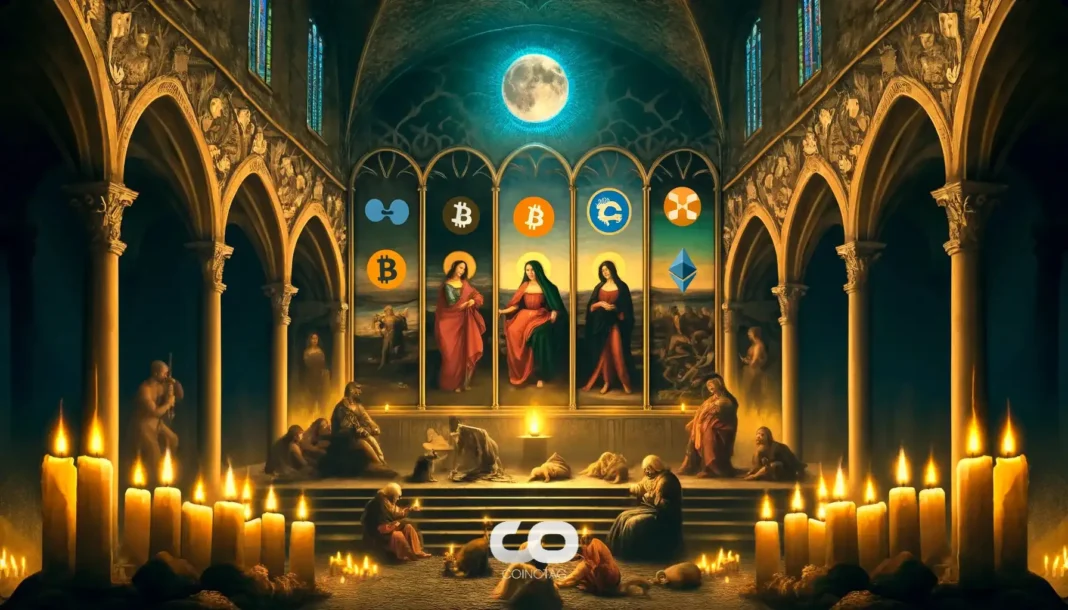-
Fed futures traders now assign a 14% probability to a U.S. Federal Reserve interest rate cut in July, signaling shifting expectations amid evolving economic conditions.
-
Bitcoin’s price remained stable near $104,300 despite geopolitical tensions and market uncertainties, reflecting cautious investor sentiment in the crypto space.
-
According to Fed Governor Christopher Waller, the central bank could initiate rate reductions as early as July, emphasizing a proactive approach to sustaining economic growth without waiting for labor market deterioration.
Fed futures indicate a 14% chance of July rate cuts as Bitcoin holds steady amid geopolitical risks; Fed Governor Waller signals potential easing to support economic stability.
Fed Rate Cut Prospects and Impact on Cryptocurrency Markets
The Federal Reserve’s recent signals suggest a potential pivot towards lowering interest rates, with futures traders pricing in a 14% chance of a cut in July, down from 28% last month. This adjustment reflects growing confidence that inflation pressures are easing, despite ongoing geopolitical tensions and trade uncertainties. Bitcoin’s price stability around $104,300 amid these developments underscores the cryptocurrency’s sensitivity to monetary policy shifts. Historically, rate cuts have injected liquidity into risk assets, benefiting cryptocurrencies by lowering borrowing costs and encouraging investment. However, the Fed’s cautious stance highlights the delicate balance between controlling inflation and fostering economic growth.
Fed Governor Christopher Waller’s Perspective on Monetary Policy Timing
Christopher Waller, a voting member of the Federal Open Market Committee, articulated a clear preference for initiating rate cuts sooner rather than later. Speaking on CNBC’s “Squawk Box,” Waller emphasized the importance of preemptive action, stating, “I think we’re in the position that we could do this as early as July.” His viewpoint reflects concerns about waiting too long and risking a sharp downturn in the labor market. This stance contrasts with some Fed policymakers who remain cautious, highlighting the ongoing debate within the central bank about the timing and magnitude of easing measures.
Economic Uncertainty and Inflation Trends Influencing Fed Decisions
The Fed’s decision to maintain rates at 4.25% to 4.5% for the fourth consecutive meeting reflects persistent economic uncertainties, including tariff-related risks and geopolitical tensions in the Middle East. Inflation has moderated more than expected in recent months, providing the Fed with some latitude to consider easing. Nonetheless, the central bank remains vigilant, balancing its dual mandate of price stability and maximum employment. Economic projections indicate a split among policymakers, with some anticipating two quarter-point rate cuts this year, while others foresee no reductions due to concerns over inflation persistence and slower growth.
Market Reactions and Analyst Insights on Fed Policy and Crypto
Zach Pandl, Head of Research at Grayscale, noted that the Fed is effectively in a holding pattern, awaiting clearer data amid tariff uncertainties. He highlighted that despite higher expected inflation later in the year, projections still lean toward monetary easing. This nuanced outlook is reflected in the crypto market’s muted reaction, where Bitcoin and Ethereum prices have remained relatively flat. The interplay between Fed policy and crypto valuations remains critical, as easing typically boosts risk assets by increasing liquidity, whereas tightening can constrain speculative investment.
Geopolitical Risks and Their Influence on Economic and Crypto Markets
Recent missile exchanges between Israel and Iran have introduced additional volatility, impacting energy prices and investor sentiment. While Bitcoin has shown resilience, trading near $104,300, these geopolitical tensions contribute to an environment of caution. The Fed’s approach to monetary policy must account for such external shocks, which can exacerbate inflationary pressures or disrupt growth trajectories. Investors in cryptocurrencies and traditional markets alike are closely monitoring these developments as they weigh the potential for policy shifts and market responses.
Conclusion
The Federal Reserve’s evolving stance on interest rates, underscored by Governor Waller’s openness to early cuts, signals a potential shift in monetary policy aimed at sustaining economic momentum. While inflation trends and geopolitical risks add complexity, the market’s current pricing of a 14% chance for a July rate cut reflects cautious optimism. For cryptocurrency investors, understanding the Fed’s policy trajectory remains crucial, as rate changes significantly influence liquidity and risk appetite. Staying informed and agile will be key as the economic landscape continues to develop.






